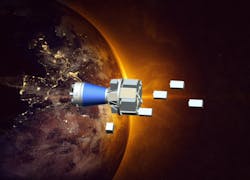Artemis I: Demonstrating the capabilities of NASA’s united networks
WASHINGTON - On our journey forward to the Moon and on to Mars, NASA must test our technologies and capabilities to ensure astronaut safety. The Artemis I mission will be an uncrewed flight test of the Orion spacecraft that places a human-rated crew vehicle in lunar orbit for the first time since the Apollo missions of the 1960s and 70s. The mission will showcase the capabilities of both Orion and the Space Launch System (SLS), NASA’s powerful new rocket, which will launch Artemis missions from Kennedy Space Center in Florida, Danny Baird reports for NASA. Continue reading original article.
The Intelligent Aerospace take:
October 12, 2020 -Baird explains that a trio of NASA SATCOM networks to guide the Artemis I mission, including a near earth network, a space network, and a deep space network. The NASA Near Earth Network guides Artemis from launch and helps navigate the unmanned craft to the Moon. NASA's Space Network will provide near-continuous communications between the spacecraft and the ground. NASA's Jet Propulsion Laboratory will handle communications with Artemis via the Deep Space Network beyond low-Earth orbit.
Related: NASA's Artemis Accords lay out some rules for joint space exploration
Related: Orion spacecraft for Artemis I mission successfully completes major testing
Jamie Whitney, Associate Editor
Intelligent Aerospace
